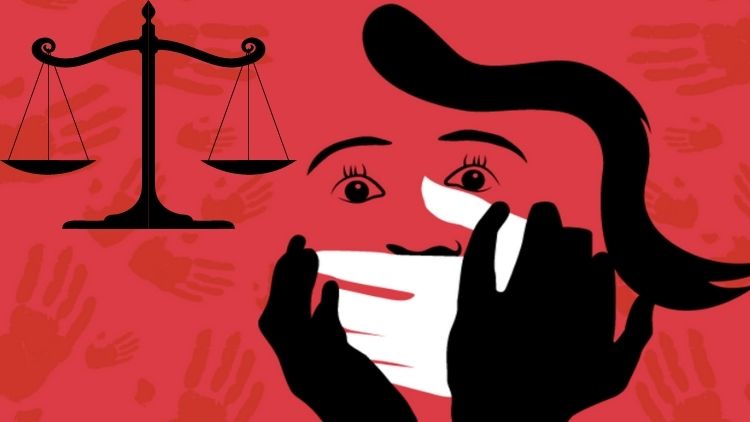Nirbhaya Act Explained


The Nirbhaya gang rape was one of the most horrific episodes in the country’s history. It served as an impetus for various reforms.
The Criminal Law (Amendment) Act 2013 (Nirbhaya Act) is a legislation passed by the Lok Sabha on March 19, 2013, and the Rajya Sabha on March 21, 2013. It amends the Indian Penal Code Law, the Indian Evidence Act, and the Code of Criminal Procedure, 1973 on sexual offences. Initially, the Act was an Ordinance issued by the then-President of India, Pranab Mukherjee, on April 3, 2013, in response to protests over the 2012 Delhi gang rape. Specific activities were identified as offences under related legislation by the Nirbhaya Act. The activities included acid attacks, sexual assault, stalking, and voyeurism.
Criminal Law (Amendment), 2013- What is Nirbhaya Act?
The tragic Nirbhaya incident led to the re-examination of a number of issues. As a result, in 2013, there were multiple reforms in Indian criminal law. The Criminal Law Amendment Act 2013 became known as the Nirbhaya Act.
- The statute was revised to add new provisions of the IPC to different sexual offences. The IPC included offences such as acid attacks, sexual attacks, stalking, and voyeurism.
- It extends the definition of rape to include oral sex, insertion of an object or body part into a woman’s vagina, anus, or urethra.
- The new amendment defines consent meaning an unconditional agreement to engage in a particular sexual act; meaning the absence of resistance will not be the same as consent.
- One of the most glaring gaps in the Nirbhaya legislation is the refusal to criminalise marital rape. Except for section 375, providing the wife is over the age of 15.
- Previously, the rape (sexual assault) cases were gender-neutral. Today, it concentrates on women. Gender neutrality becomes necessary in the following situations:
- a) A guy or transgender person is raped.
- b) On numerous occasions, women sexually assaulted other women.
Punishments under the Nirbhaya Act
Punishments under Nirbhaya Act:
- Punishment for Rape: The Penal did not recommend the death penalty for rapists. It suggests that the punishment under Nirbhaya Act should be imprisonment or rigorous imprisonment (RI) for seven years to life imprisonment. It advises the death penalty or persistent vegetative state (RI) for a minimum of 20 years. But, the punishment can also be healthy meaning a lifetime sentence. The Act proposes minimum punishment of 20 years for gang rapes with the possibility of life imprisonment. Punishment for gang rapes after death should be life imprisonment.
- Punishment In Other Sexual Offenses: The Penal felt the necessity to punish all types of sexual offences. It proposed a seven-year prison penalty for voyeurism and a three-year prison sentence for continually activating or attempting to connect with a person in any form. Acid attackers face up to seven years in prison if detained; RI for seven to ten years for trafficking.
- Complaints and medical examinations: Police must register complaints of rape. The public body must do its job to report any rape case it knows. According to the report, any police officer who fails to record a rape case or attempts to retract their investigation commits a criminal offence. It proposed regulations for the medical evaluation of sexual assault victims. The Penal said Such protocol-based testing and clinical testing are essential for implementation and uniformity.
What is the Nirbhaya Fund?
The Nirbhaya Fund under the Nirbhaya Act of 2013 supports programmes focused on increasing the safety and security of women in public places. However, in 2015 the Nirbhaya Fund expanded.
The programs under which provinces of funds are
- Funded include emergency support programs,
- Victims’ compensation fund,
- Cybercrime prevention of women and children,
- Mahila police volunteers, and
- Universalisation helpline number.
Conclusion
The Criminal Law (Amendment) Act of 2013 is a concrete step to combat violence against women by the Government of India.
It should be noted that the total number of cases increased as a result of amendments to the Act in the Indian Penal Code. This is due to the fact that offences like acid attacks historically lacked clear provisions and meaning in the Code.
Despite its shortcomings, the Nirbhaya Act has a long-term goal of making a difference and combating violence against women. However, the Act itself is insufficient to confront and seek justice for the offences.
In this regard, the Government of India must invest heavily in the infrastructure required to address the crimes by undertaking meaningful reforms in the judiciary (building faster women’s courts, greater involvement of women lawyers, female doctors to assess victims) and improving the police system in India.
About The Author
Pratibha Sahani is a content writer. She is passionate about writing articles for law and legal websites. She makes an effort to provide her audience with a thorough understanding of legal terminology
